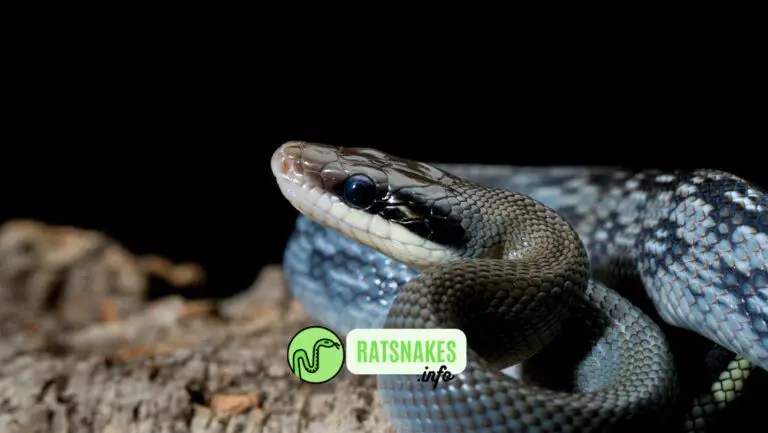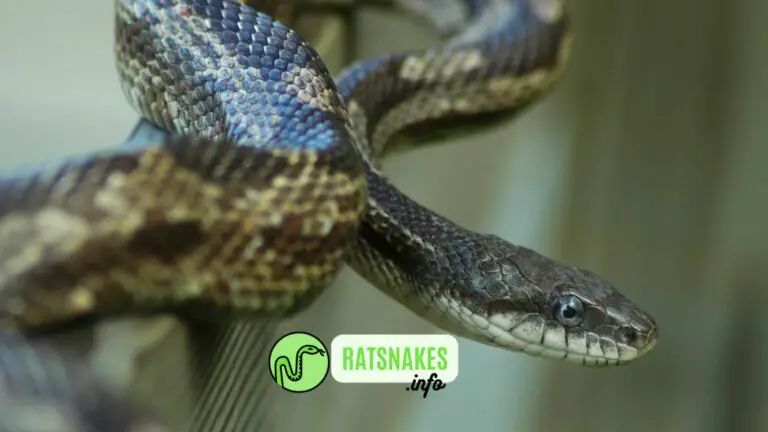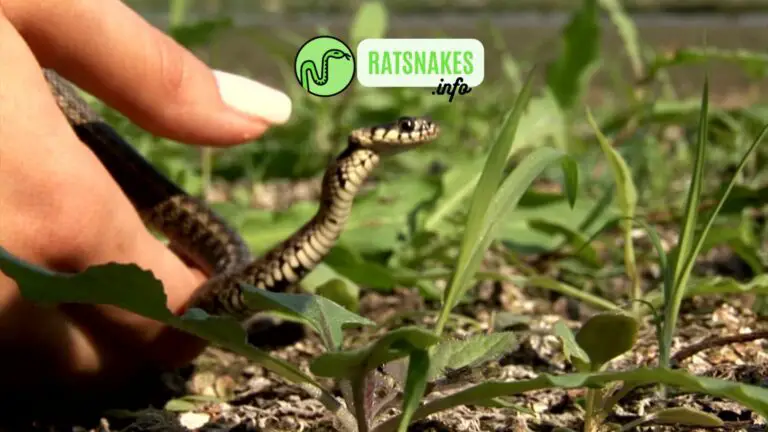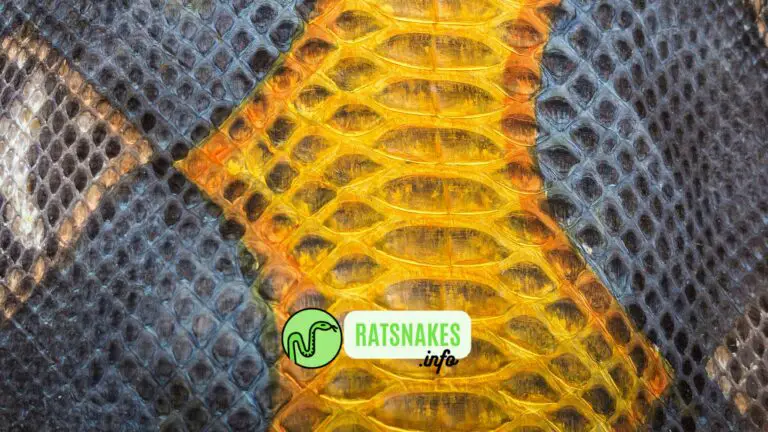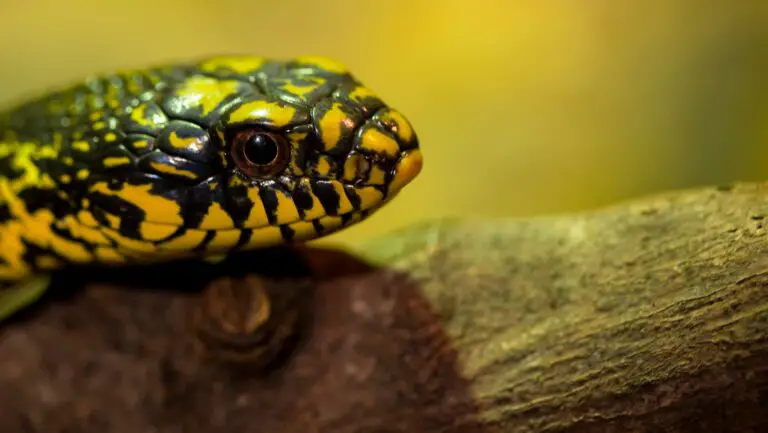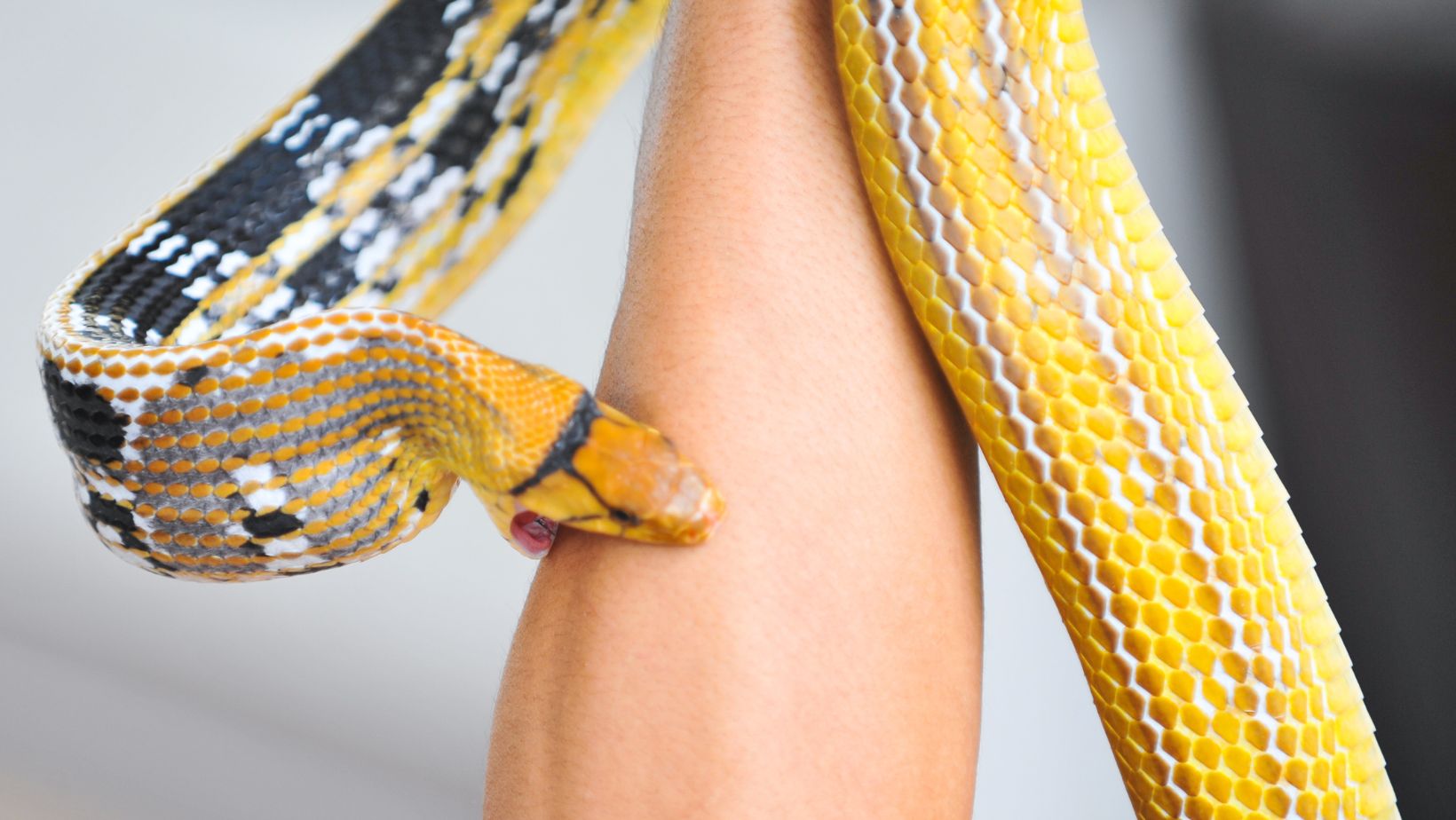
Rat snakes are a fascinating group of reptiles known for their sleek bodies and striking patterns. These non-venomous snakes are found in various regions around the world and are popular among reptile enthusiasts. However, like any other snake, rat snakes are capable of biting when they feel threatened or cornered. In this comprehensive guide, we will explore the topic of rat snake bites, including symptoms, treatment options, prevention methods, and more. So, let’s dive in and gain a better understanding of rat snake bites.
Rat snakes are a diverse group of constrictor snakes belonging to the Colubridae family. With over 50 recognized species, they are known for their adaptability and ability to thrive in a variety of habitats. These snakes are generally harmless to humans and play a crucial role in controlling rodent populations. However, it’s important to exercise caution and respect when encountering these reptiles in the wild or as pets.
Do Rat Snakes Bite? Is It Lethal?
Yes, rat snakes are capable of biting if they feel threatened or provoked. However, they are generally non-venomous and their bites are not lethal to humans. Rat snakes are constrictors, which means they wrap their bodies around their prey to subdue and consume them, rather than relying on venom to immobilize their prey.
If a rat snake were to bite a human, it would likely be in self-defense, and the bite may result in minor injuries such as puncture wounds or scratches. Rat snakes are not known for aggressive behavior towards humans, and they generally prefer to avoid confrontation. It’s important to remember that any wild animal can potentially bite if they feel threatened, so it’s best to keep a safe distance and not handle them unless you are properly trained and experienced. If you encounter a rat snake or any other snake, it’s advisable to leave it alone and allow it to retreat to its natural habitat.
Are Rat Snakes Venomous Or Poisonous?
Rat snakes are not venomous. They are constrictor snakes, subduing their prey by coiling around them and squeezing until they cannot breathe. Rat snakes are non-venomous and rely on their powerful bodies to capture and restrain their prey, which primarily consists of small rodents like rats and mice. While rat snakes can bite if threatened, their bite is not venomous and poses no significant danger to humans. It’s always advisable to leave snakes alone and not attempt to handle or provoke them, regardless of whether they are venomous or non-venomous.
What are Rat Snakes?
Rat snakes, scientifically known as Elaphe, are non-venomous snakes that are commonly found in North America, Asia, and Europe. They come in a wide range of colors and patterns, with some species resembling venomous snakes for protective mimicry. Rat snakes are skilled climbers and are often found in trees, barns, and abandoned buildings where they hunt for prey, primarily rodents.
Rat Snake Bites
While rat snakes are generally docile and prefer to avoid confrontation, they may bite if they feel threatened or provoked. It’s essential to understand the implications of a rat snake bite and how to respond appropriately to minimize any potential risks or complications.
Symptoms
When bitten by a rat snake, certain symptoms may manifest. These can vary depending on factors such as the individual’s sensitivity, the location of the bite, and the size of the snake. Common symptoms of a rat snake bite include:
- Localized pain and swelling
- Redness and inflammation around the bite area
- Bleeding or puncture wounds
- Mild to moderate discomfort
Treatment Options
Treating a rat snake bite promptly can help prevent infection and minimize complications. Here are some recommended treatment options:
First Aid Measures
Immediately following a rat snake bite, it’s important to:
- Stay calm and try to keep the affected area as still as possible.
- Wash the bite area gently with soap and water.
- Apply a clean, sterile dressing or bandage to control bleeding.
- Keep the bitten limb elevated to reduce swelling.
- Avoid applying ice directly to the wound.
Seeking Medical Help
Even though rat snakes are non-venomous, it’s still advisable to seek medical attention after a bite. Medical professionals can evaluate the wound, provide necessary tetanus shots, and prescribe antibiotics if infection is a concern.
Prevention
Preventing rat snake bites is crucial for both human safety and the well-being of these reptiles. By following some preventive measures, you can greatly reduce the chances of encountering a biting rat snake.
- Avoid handling or disturbing rat snakes in the wild.
- Wear appropriate protective clothing, such as gloves, when working in areas where snakes may be present.
- Seal off any potential entry points in your home or property to discourage snakes from entering.
- Educate yourself and others about rat snakes, their behavior, and proper handling techniques.
How to Handle a Rat Snake Bite?
In the unfortunate event of a rat snake bite, it’s important to know how to respond effectively to minimize any potential risks or complications.
First Aid Measures
Follow these steps when handling a rat snake bite:
- Stay calm and reassure the person who has been bitten.
- Gently clean the bite area with soap and water.
- Apply a sterile bandage or dressing to control bleeding.
- Keep the bitten limb elevated.
- Transport the individual to a medical facility for evaluation, especially if there are concerns about infection.
Seeking Medical Help
It’s crucial to seek medical assistance after a rat snake bite, even if it’s from a non-venomous species. Medical professionals can assess the wound, provide appropriate treatment, and offer guidance for further care.
Do Rat Snakes Carry Venom?
Rat snakes are generally non-venomous, meaning they do not produce or inject venom into their prey or potential threats. However, there are some venomous species of snakes that are commonly referred to as “rat snakes.” It’s important to differentiate between venomous and non-venomous rat snakes for safety purposes.
Non-Venomous Rat Snakes
The majority of rat snake species are non-venomous and pose no direct threat to humans. These snakes rely on constriction to subdue and consume their prey. They play an essential role in maintaining the ecological balance by controlling rodent populations.
Venomous Rat Snakes
Although less common, there are a few venomous snake species that fall under the umbrella term “rat snakes.” These venomous rat snakes possess venom glands and specialized fangs to immobilize and incapacitate their prey. Examples include the Asian green pit viper and the Malayan pit viper.
Identifying Rat Snake Bites
Identifying a rat snake bite can be challenging, especially when distinguishing it from other snake bites. However, certain characteristics can help in the identification process.
How to Identify a Rat Snake? Correctly identifying a rat snake is essential for understanding its behavior, potential dangers, and appropriate handling techniques. Here are some key characteristics that can help you identify a rat snake:
- Appearance: Rat snakes have a slender body with smooth scales. They come in various colors and patterns, often resembling patterns seen in venomous snakes. However, rat snakes have a narrower head and round pupils, distinguishing them from venomous species.
- Size: Rat snakes can vary in size, but most adult individuals range from 3 to 6 feet long, although some species can grow even larger.
- Habitat: Rat snakes are found in different regions worldwide, including North America, Asia, and Europe. They inhabit a variety of environments such as forests, grasslands, farmlands, and abandoned buildings.
- Behavior: Rat snakes are generally docile and non-aggressive towards humans. They are skilled climbers and excellent hunters of rodents, which is how they earned their name.
Remember, it’s always recommended to consult a local field guide or seek professional help from herpetologists or experienced individuals to ensure accurate identification.
Differentiating Rat Snake Bites from Other Snakes
To differentiate a rat snake bite from other snake bites, consider the following factors:
- Bite marks: Rat snake bites usually exhibit two rows of small puncture wounds.
- Lack of venom symptoms: Rat snake bites, particularly from non-venomous species, typically do not cause severe symptoms associated with venomous snake bites.
- Geographic location: Familiarize yourself with the snake species in your region to narrow down the possibilities.
What Happens If a Rat Snake Bites You
If you find yourself on the receiving end of a rat snake bite, it’s essential to understand what might happen and how to respond. Rat snakes, although non-venomous, can deliver a bite that can cause certain effects.
When a rat snake bites, it typically punctures the skin, leaving behind small, needle-like bite marks. The severity of the bite depends on various factors, including the size of the snake, the location of the bite, and the individual’s sensitivity.
Upon being bitten by a rat snake, you may experience the following:
- Localized Pain and Swelling: The bite area can be painful and may swell due to the trauma caused by the snake’s teeth.
- Redness and Inflammation: The bite site may become red and inflamed as a natural immune response to the snake’s saliva.
- Bleeding or Puncture Wounds: Rat snake bites can result in minor bleeding or small puncture wounds where the snake’s teeth penetrated the skin.
- Mild to Moderate Discomfort: You may feel discomfort or soreness around the bite area, which can last for a few days.
It’s important to note that rat snake bites are generally not life-threatening to humans. However, it’s crucial to respond appropriately to minimize any potential risks or complications.
Rat Snake Bite Treatment
Treating a rat snake bite promptly can help prevent infection and reduce potential complications. Although rat snakes are non-venomous, proper treatment is still necessary. Here’s what you should do:
- Stay Calm: It’s important to remain calm to avoid unnecessary panic and stress.
- Clean the Bite Area: Gently wash the bite area with mild soap and water to remove any dirt or bacteria.
- Apply Pressure: If there is bleeding, apply gentle pressure using a clean cloth or sterile bandage to control it.
- Elevate the Affected Limb: Keeping the bitten limb elevated can help reduce swelling.
- Do Not Apply Ice: Avoid applying ice directly to the wound, as it may cause additional tissue damage.
After initial first aid, it is advisable to seek medical attention, especially if the bite becomes infected or if there are concerns about the wound’s healing. Medical professionals can evaluate the bite, provide appropriate treatment, and ensure proper care.
Rat Snake Bite Marks
Rat snake bite marks typically exhibit two rows of small puncture wounds. These marks are caused by the snake’s teeth penetrating the skin during the bite. The size and depth of the marks may vary depending on factors such as the snake’s size and the individual’s skin sensitivity.
The bite marks are usually close together and can be several millimeters apart, resembling a series of small dots or punctures. While the bite marks may be visible, they are generally not as pronounced or severe as those caused by venomous snake bites.
Rat Snake Bite Effects
The effects of a rat snake bite are generally localized to the bite area. Common effects may include:
- Pain and Swelling: The bite area can be painful, and swelling may occur due to the trauma caused by the snake’s bite.
- Redness and Inflammation: The bite site may become red and inflamed as a natural immune response to the snake’s saliva.
- Mild Discomfort: Some individuals may experience mild discomfort or soreness around the bite area, which usually resolves within a few days.
It’s important to note that rat snake bites are not venomous, and severe systemic effects or life-threatening complications are rare. However, as with any wound, there is a risk of infection. If you experience worsening symptoms, persistent pain, or signs of infection, it’s essential to seek medical attention promptly.
Remember, prevention is key. Avoid provoking or handling rat snakes in their natural habitats to minimize the chances of a bite occurring.
Conclusion
In conclusion, understanding rat snake bites is important for both snake enthusiasts and individuals who may encounter these reptiles in the wild. Rat snakes, although non-venomous, can bite if they feel threatened or provoked. It’s crucial to follow appropriate preventive measures, handle bites correctly, and seek medical attention when necessary. By respecting rat snakes and their natural habitats, we can coexist safely with these fascinating creatures.
FAQs
Q1: Are rat snakes aggressive? A: Rat snakes are generally not aggressive towards humans. However, if they feel threatened or cornered, they may bite in self-defense.
Q2: Can rat snake bites be fatal? A: Rat snake bites are typically not fatal to humans. However, complications such as infection can occur if not properly treated.
Q3: How can I prevent rat snake encounters in my backyard? A: To prevent rat snake encounters, ensure there are no openings or gaps where snakes can enter your property. Keep your yard clean and free of rodent infestations.
Q4: Can I keep a rat snake as a pet? A: Rat snakes can be kept as pets by experienced reptile owners. Adequate housing, proper diet, and a good understanding of their needs are essential for their well-being.
Q5: Are rat snakes endangered? A: Rat snakes, as a group, are not considered endangered. However, certain species may face threats due to habitat loss and illegal collection. It’s important to support conservation efforts to protect these snakes and their ecosystems.

![Prey of Ratsnakes in the Wild [Full List]](https://ratsnakes.info/wp-content/uploads/2022/11/Prey-of-Ratsnakes-768x432.jpg)
